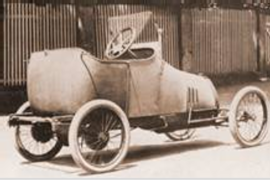BUGATTI Type 19 Models/Series Timeline, Specifications & Photos
First production year: 1911
Engines: Gasoline
Body style: Convertible (spider/spyder, cabrio/cabriolet, drop/open/soft top)
Ettore Bugatti created a car for children, but he produced it in only one unit as a prototype, but the concept lived on under different badges.
The Italian-born Frenchman established its company in 1909 in the small city of Molsheim, which was in Germany at that time. Yet, he didn't have enough funding to develop, produce, and sell a vehicle from scratch. But he had another idea: to create prototypes that he could sell to big carmakers from that era and gather the money for the Bugatti brand. Thus, in 1911, he invented the Bugatti Type 19 Bebe, a tiny vehicle primarily suitable for children. He then showed it to Wanderer, who bought the project. In 1913, Peugeot also stepped in and acquired the rights for the vehicle but adapted the project to cut production costs.
Bugatti designed the Typ 19 Bebe as an affordable, small-sized vehicle. It wasn't precisely a full-size one, but it could accommodate two occupants inside the open cockpit. The car's front sported a thick brass rim for the radiator's grille flanked by slim and sloped-down fenders. There was even a pair of oxyacetylene-based headlamps fitted at the front, with another pair of lamps next to the straight, flat windshield. A front-hinged door allowed occupant(s) to enter the cockpit and sit on the bench. The Typ 19 Bebe sported even a retractable roof that could have been folded down behind the cabin.
Under the hood, Bugatti installed a small, 10 PS inline-four mill. It was paired with a four-speed manual, and Wanderer used that solution. Peugeot, on the other hand, used its own small-sized engine and paired it with a three-speed gearbox.
